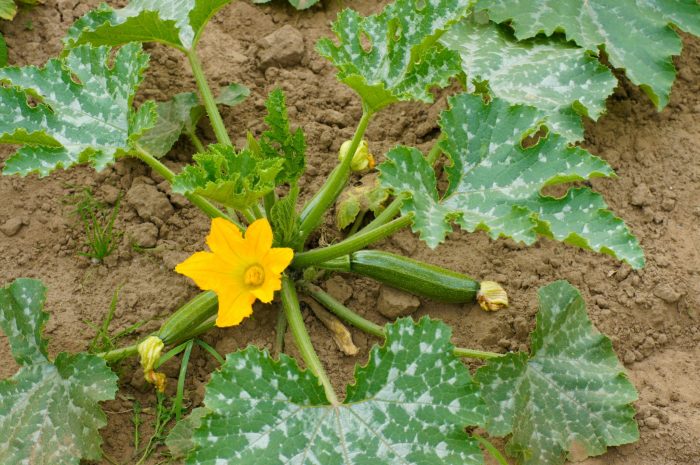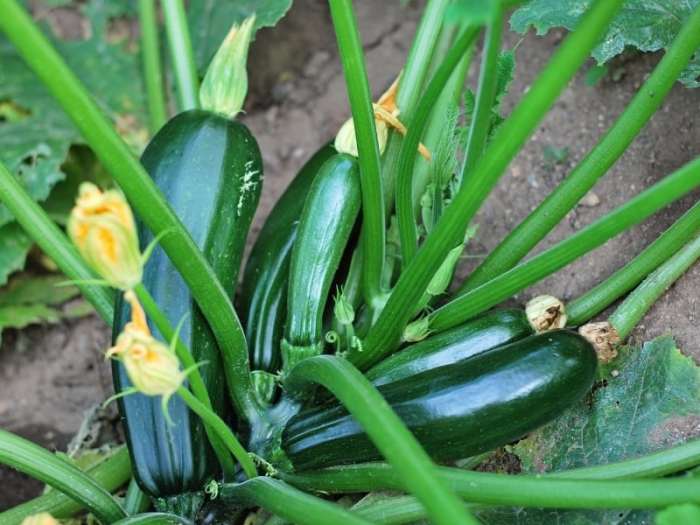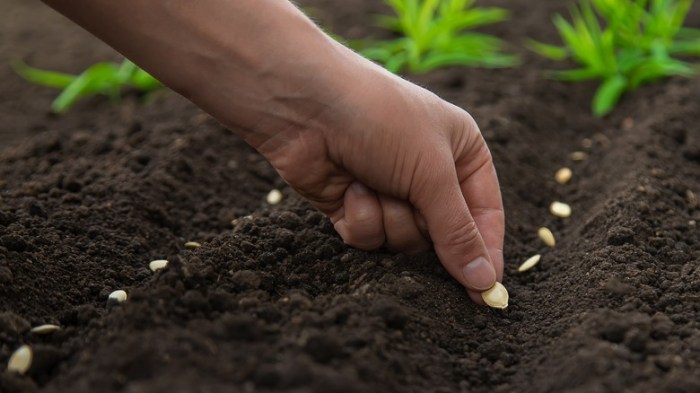When to Plant Zucchini Seeds
Ideal Timing for Planting Zucchini Seeds
When to plant zucchini seeds – Successfully growing zucchini hinges on understanding its temperature preferences and the local climate. Planting too early exposes seedlings to frost damage, while planting too late shortens the growing season, reducing yield. This section details how to determine the optimal planting time based on your region’s climate and soil conditions.
Factors Influencing Optimal Planting Times

Source: installitdirect.com
Two primary factors determine the ideal planting time: the average last frost date and the soil temperature. Zucchini is a warm-season crop, thriving in temperatures above 60°F (15°C). Frost can kill seedlings, so planting should occur after all danger of frost has passed. Soil temperature is equally crucial; warm soil promotes faster germination and vigorous growth.
Planting Times by USDA Hardiness Zone
The USDA Plant Hardiness Zone system provides a helpful framework for determining planting times. The table below offers recommended planting dates based on average last frost dates for different zones. Remember these are averages; local microclimates can influence actual frost dates.
| Zone | Average Last Frost Date | Recommended Planting Date | Days to Maturity |
|---|---|---|---|
| 3 | Late May – Early June | Late May – Early June (Start indoors 4-6 weeks earlier) | 55-65 |
| 4 | Mid-May | Mid-May – Early June (Start indoors 4-6 weeks earlier) | 55-65 |
| 5 | Early May | Early May – Mid May (Start indoors 3-4 weeks earlier) | 55-65 |
| 6 | Late April | Late April – Early May (Start indoors 2-3 weeks earlier) | 55-65 |
Determining Your Local Frost-Free Date
To pinpoint your local frost-free date, consult historical weather data from your local weather station or online weather archives. Look for the average date of the last spring frost and the first fall frost. This information will help you determine the length of your growing season and the ideal planting window for zucchini.
Starting Zucchini Seeds Indoors vs. Direct Sowing
Zucchini seeds can be started indoors or sown directly outdoors. Each method offers advantages and disadvantages, influencing the timing and success of your harvest. This section compares both methods and provides detailed instructions for each.
Advantages and Disadvantages of Each Method
Starting seeds indoors provides a head start, resulting in an earlier harvest. However, it requires more effort and resources. Direct sowing is simpler but may lead to a later harvest and potentially lower yields if germination is poor due to unpredictable weather conditions.
Starting Zucchini Seeds Indoors
Starting zucchini seeds indoors involves several steps, from seed selection to providing optimal germination conditions. This process ensures healthy seedlings ready for transplanting once the danger of frost has passed.
- Select high-quality zucchini seeds from a reputable supplier.
- Use a well-draining seed-starting mix.
- Plant seeds in small pots or seed trays, about ½ inch deep.
- Maintain a warm temperature (70-75°F) and consistent moisture.
- Provide adequate light, either with a grow light or a sunny windowsill.
Direct Sowing Zucchini Seeds Outdoors
Direct sowing is a simpler method, suitable for warmer climates where the threat of frost is minimal. Proper soil preparation and seed spacing are crucial for successful germination and plant development.
- Prepare the soil by tilling, removing weeds, and incorporating organic matter.
- Plant seeds about 1 inch deep and 2-3 feet apart.
- Water gently after planting.
- Thin seedlings to one plant per location once they emerge.
Resources Needed for Each Method
| Method | Resources Needed |
|---|---|
| Starting Indoors | Seeds, seed-starting mix, pots or trays, grow lights (optional), watering can |
| Direct Sowing | Seeds, garden trowel, watering can, soil amendments (optional) |
Soil Preparation and Site Selection: When To Plant Zucchini Seeds
Proper soil preparation and site selection are vital for optimal zucchini growth. Zucchini thrives in fertile, well-drained soil with ample sunlight. This section details how to prepare your garden bed and choose the ideal location for planting.
Ideal Soil Conditions
Zucchini prefers slightly acidic to neutral soil with a pH between 6.0 and 7.0. Well-drained soil prevents root rot, a common problem for zucchini. Fertile soil rich in organic matter provides the nutrients needed for vigorous growth and abundant fruit production.
The ideal time to plant zucchini seeds is after the last frost, when soil temperatures are consistently warm. This often coincides with the time you can plant other warm-season crops, such as determining when to plant your watermelon, which you can find out more about by checking this helpful guide: when can you plant watermelon seeds.
Knowing this helps ensure both your zucchini and watermelon thrive, as both need similar warm conditions for optimal growth.
Best Location for Planting
Choose a sunny location that receives at least 6-8 hours of direct sunlight daily. Protect the plants from strong winds, which can damage delicate leaves and flowers. Avoid planting zucchini near other vining plants to prevent competition for resources.
Soil Amendments

Source: northernnester.com
Improving soil structure and fertility is crucial. Amend heavy clay soils with compost or other organic matter to improve drainage and aeration. Sandy soils benefit from the addition of peat moss or other organic materials to retain moisture.
Soil Preparation
Before planting, till the soil to a depth of 12-18 inches, removing any weeds or debris. Incorporate a generous amount of compost or other organic matter to enrich the soil and improve its structure. Level the soil surface before planting.
Seed Starting Techniques and Care
Several methods can be used to start zucchini seeds, each with its own advantages and considerations. Proper watering and vigilance for potential problems are crucial for successful seedling development.
Methods for Starting Zucchini Seeds
Seeds can be started in seed trays, peat pots, or sown directly outdoors. Seed trays offer better control over germination conditions, while peat pots allow for easy transplanting without disturbing the roots. Direct sowing simplifies the process but can result in less consistent germination.
Optimal Watering Techniques, When to plant zucchini seeds
Keep the soil consistently moist but not soggy. Overwatering can lead to damping-off, a fungal disease that kills seedlings. Water gently from the base of the plants to avoid wetting the leaves, which can promote fungal growth.
Potential Problems and Solutions
- Damping-off: A fungal disease causing seedling collapse. Improve drainage, avoid overwatering, and use a fungicide if necessary.
- Slow Germination: Check soil temperature and moisture levels. Ensure adequate light and warmth.
Appearance of a Healthy Zucchini Seedling
A healthy zucchini seedling is robust, with two or more healthy, dark green leaves. The stem is thick and sturdy, and the plant shows no signs of disease or pests. The seedling should be actively growing and developing new leaves.
Post-Planting Care and Maintenance
Ongoing care is essential for a bountiful zucchini harvest. This includes regular watering, fertilization, pest control, and support for the growing plants. This section Artikels a schedule and techniques for maintaining healthy zucchini plants throughout the growing season.
Watering, Fertilizing, and Pest Control Schedule

Source: housedigest.com
Water deeply and regularly, especially during dry periods. Fertilize every 2-3 weeks with a balanced fertilizer. Monitor for pests and diseases, using appropriate organic or chemical control methods as needed. Regular inspection is crucial for early detection and intervention.
Common Zucchini Pests and Diseases
Squash bugs, squash vine borers, and powdery mildew are common zucchini pests and diseases. Organic control methods include handpicking pests, using insecticidal soap, and improving air circulation to prevent fungal diseases. Chemical control options should be used cautiously and according to label instructions.
Supporting Zucchini Plant Growth
Zucchini plants can become quite large and heavy, sometimes requiring support. Trellising or staking helps prevent the plants from sprawling on the ground, improving air circulation and reducing the risk of diseases. This also makes harvesting easier.
Zucchini Plant Care Tasks
- Planting: Prepare soil, plant seeds or seedlings.
- Watering: Water regularly, especially during dry periods.
- Fertilizing: Apply balanced fertilizer every 2-3 weeks.
- Pest and Disease Control: Monitor regularly and treat as needed.
- Support: Trellis or stake plants as they grow.
- Harvesting: Harvest zucchini when they are young and tender.
Top FAQs
What type of zucchini is best for beginners?
Black Beauty and Early Prolific Straightneck are excellent choices for beginners due to their ease of cultivation and reliable yields.
How deep should I plant zucchini seeds?
Plant zucchini seeds about 1 inch deep.
How far apart should I space zucchini plants?
Space zucchini plants 2-3 feet apart to allow for adequate growth.
What should I do if my zucchini plants are not producing fruit?
Check for insufficient pollination (hand-pollinate if necessary), inadequate watering, or nutrient deficiencies. Ensure sufficient sunlight and consider adjusting your fertilization schedule.





















